Web Browser DefinitionWeb Browser: What Does It Mean?Users can find, access, and view web pages with the help of a web browser, which is a software program. The term "browser" is frequently used to refer to a web browser. Using languages like 'Hypertext Markup Language' (HTML) and 'Extensible Markup Language' (XML), websites on the internet and other content are generally displayed and accessed through web browsers. Web pages and websites transmitted via the Hypertext Transfer Protocol (HTTP) are converted into content humans can view using browsers. They can also display additional protocols and prefixes, such as secure 'HTTP' (HTTPS), 'File Transfer Protocol' (FTP), 'email handling', and files (file:). Additionally, most browsers accept third-party plug-ins to show dynamic material such as embedded video, audio, and game content. What Distinguishes a Search Engine from a Browser?Search engines and web browsers are sometimes mistaken for one another, yet they serve different purposes. A search engine contains searchable data about other websites (common examples of search engines are Google, Bing, Yahoo, and Baidu). Nonetheless, a browser must connect to a website's server and view its web pages. These are a few examples of browsers. What functions do web browsers have?Anything on the internet is accessible with a web browser, and it pulls data from other websites and displays it on your computer or mobile device. The Hypertext Transfer Protocol, which outlines how text, pictures, and video are communicated on the web, is used to send the information. To ensure that users of any browser, anywhere in the globe, can access this information, it must be shared and presented consistently. However, not every browser developer opts to interpret the format in the same way. This implies to users that a website may have a varied appearance and functionality. Web standards aim to provide uniformity among browsers so that users can utilize and enjoy the internet. When a web browser requests data from a server connected to the internet, it converts that data into images and text using a program known as a rendering engine. Web browsers read the Hypertext Markup Language (HTML) code contained in this data to produce the images, sounds, and experiences of the internet. Users can navigate to other online pages or sites via hyperlinks. Every image, video, and webpage has a distinct Universal Resource Locator (URL), commonly called a web address. When a browser requests data from a server, the web address instructs the browser where to look for each item described in the HTML, instructing the browser where it should appear on the web page. Different Web BrowsersAll web browsers do the same tasks. As a result, various web browsers have been used over the years. Several web browser examples and their unique features are covered below: 1. Google Chrome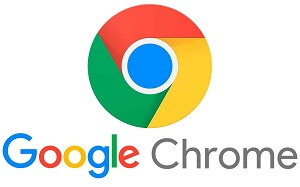
The most widely used browser in the USA is Chrome, developed by internet giant "Google" and regarded as quick, safe, and dependable by PC and smartphone users. The Chrome Store offers various customization options in the form of helpful extensions and apps that may be downloaded without charge. Moreover, Chrome makes it simple to integrate with other Google services, like Gmail. Due to its popularity, Google has since expanded the "Chrome" brand name to include more products such as the Chromebook, Chromebox, Chromecast, and Chrome OS. 2. Apple Safari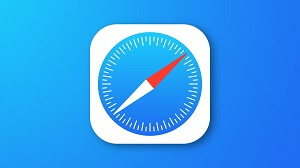
On Apple phones, laptops, and other Apple devices, Safari is the default browser. It is typically regarded as a reliable browser, and Apple's ethos is reflected in its sleek appearance. Due to the dominance of iPhones and iPads, Safari, initially designed for Macs, has grown to dominate the mobile industry. In contrast to other browsers mentioned, Safari is only available from Apple, cannot be used with Android devices, and no longer receives critical security updates from Apple for the Windows version. 3. Microsoft Edge and Internet Explorer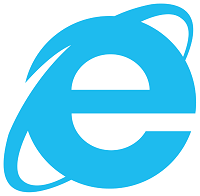
Although being discontinued, Internet Explorer deserves to be mentioned because it was the preferred browser in the early years of the internet revolution, with a 95% user share in 2003. However, in the years that followed, many people switched to Chrome and Firefox because of their generally slow startup time. Internet Explorer 11 was the last version to be published because Microsoft announced in 2015 that Microsoft Edge would take Internet Explorer's place as the default browser on Windows 10. Microsoft Edge has a smaller market share than Internet Explorer, which is nonetheless widely used worldwide as of the time of writing. 4. Mozilla Firefox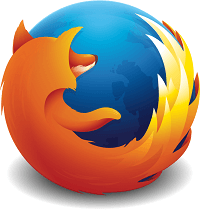
Firefox is an open-source browser developed by members of the Mozilla Foundation's community, in contrast to Chrome, Safari, Internet Explorer, and Microsoft Edge. With a wide variety of available add-ons and extensions, it may be the most individualized of the major browsers. It had a user share of 32.21% as of the end of 2003 before steadily slipping behind Google Chrome's influence. It still competes fiercely in the "desktop" market but has a smaller market share on mobile devices, where Google Chrome and Apple Safari are more popular. 5. Opera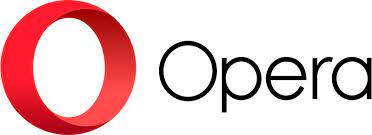
Opera, made for Microsoft Windows, Android, iOS, macOS, and Linux operating systems, is another web browser worth mentioning. It includes a few unique characteristics and is usually considered a solid choice by many people. Many of its original features have since been added to competing browsers. Also, it offers a unique user interface. Opera has a usage rate of only 2.28% as of this writing, yet it is nonetheless influential, if not widely. In addition, the Opera Mini web browser, created especially for mobile users, was released in 2005. Opera, the PC version, published in 1995 before the mobile version, was created by Opera Software and supported an exemplary user interface. Components of a Web BrowserSeven key elements work together to make the web browser functional. That is: 1. User Interface When you launch a web browser, the first page you view is the user interface. The address bar, forward/backward button, menu, bookmarking option, and a few other options are all present on this page. 2. Browser Engine The browser engine connects the rendering engine and the browser's user interface. It adjusted the rendering engine to provide an output based on the input. 3. The rendering system The production of required content for the browser and its display on the screen is the responsibility of the rendering engine. The HTML documents are parsed before being converted to a usable form. Every browser that we are aware of has a different rendering engine.
The open-source rendering engine WebKit was developed for Linux, and apple changed it to support both Mac and Windows. 4. Networking On the internet, communication and security are handled by the network layer. It is also utilized for HTTP queries and caches the retrieved pages to reduce network traffic. 5. UI Backend It is used to draw simple boxes, windows, and widgets. This is for a general-purpose interface and is not platform-specific. Underneath all of this, UI techniques are handled by an operating system. 6. JavaScript Interpreter JavaScript powers all websites and web pages. These pages were all written in JavaScript. The rendering engine uses the pages that the interpreter has translated to display the finished product. 7. Data persistence Cookies are an example of data that is saved locally through data persistence or storage. The browsers allow you to store databases locally on your computer using storage methods such as IndexedDB, WebSQL, File System, etc. User data is managed in the same way as cookies, cache, and bookmarks are. User data is managed in the same way as cookies, cache, and bookmarks are. What a Web Browser Can DoThe web browser has several features, including:
ConclusionWhich will you pick now that you've read enough about web browsers? You can pick one or all of the different web browsers offered on the market. Everything is dependent on your needs. For instance, choose Kingpin or Iridium if you want a private network. You can thus try each one and then stay with the ones you like.
Next TopicWeight Definition
|
 For Videos Join Our Youtube Channel: Join Now
For Videos Join Our Youtube Channel: Join Now
Feedback
- Send your Feedback to [email protected]
Help Others, Please Share










